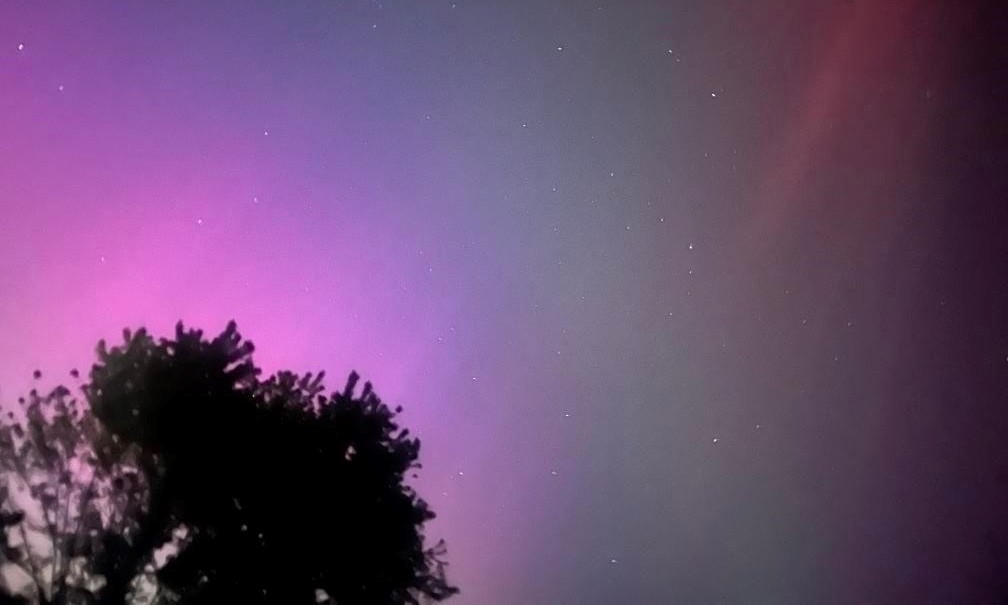FOMO After Missing Northern Lights Display? NASA Says Might be Visible Again

FOMO After Missing Northern Lights Display? NASA Says Might be Visible Again
Gear up for another spectacular northern light show caused by solar storms.
15 May 2024
By Khushi Maheshwari
Space experts are considering the likelihood of another powerful geomagnetic storm this week, following one that struck Earth a few days ago.
The National Oceanic and Atmospheric Administration (NOAA) of the United States has said that there is a 60% possibility that Earth will be hit by one more solar storm on Tuesday or maybe Wednesday (a smaller chance). There is now a greater chance of viewing the Aurora in more places of the world, thanks to the updated prediction.
Another one! ☀️ 💥
— NASA Sun & Space (@NASASun) May 13, 2024
An M6.6-class solar flare erupted on Monday, May 13. (Not as strong as some of the others we’ve had in the past week, but it sure is pretty!)
This week, we’re answering popular questions about solar storms and their impacts on Earth. Stay tuned! pic.twitter.com/EPgHa9D4Er
The official X handle of NASA put out a post stating: “Another one!
An M6.6-class solar flare erupted on Monday, May 13. (Not as strong as some of the others we’ve had in the past week, but it sure is pretty!)
This week, we’re answering popular questions about solar storms and their impacts on Earth. Stay tuned!”
The ‘northern lights,’ also known as auroras, are captivating displays of natural light that mostly happen in the polar regions. When charged particles from the Sun, called solar wind, interact with the Earth’s magnetic field and atmosphere, amazing events like these can happen.
Space weather and solar storm
The weather in space differs greatly from that on Earth. Earth’s weather is influenced by atmospheric factors including temperature, humidity and air pressure, which can result in storms that bring wind and precipitation. Rainfall is impossible in the vacuum of space since there is neither air nor water present. However, there is wind—solar wind—which is a stream of energy and plasma, or charged particles, from the Sun rather than air at all. Space weather storms affect Earth even if they are invisible.
When the sun abruptly releases energy, like during a coronal mass ejection (CME), it can cause solar storms or geomagnetic storms. When charged particles from the Sun make contact with Earth’s magnetic field, they have the ability to interfere with radio, satellite, electric power grid, communications and navigation.
The geomagnetic storm scale, or G-scale, is used to gauge how severe solar storms are. The levels on this scale, which go from G1 to G5, correspond to various intensities of geomagnetic activity. A G1 storm, for example, could only slightly affect power systems, whereas a G5 storm could cause extensive power outages and interfere with satellite communications.
Other effects of solar storms may include:
- Radio Blackouts: X-rays are among the electromagnetic energy kinds released by solar flares. When the ionosphere is disrupted, increased X-ray emissions can scatter radio waves, which can lead to radio blackouts on Earth. Radio blackouts are the most frequent form of space weather influence that Earth experiences, lasting anywhere from a few minutes to many hours. Every 11-year solar cycle, there are, on average, 2000 radio blackouts caused by solar activity. Solar flare energy travels to Earth in around eight minutes, giving little opportunity for warning. As a result, scientists keep a close eye on the Sun to ensure that they can issue alerts as soon as feasible.
- Solar Radiation Storm: Coronal mass ejections and solar flares are the two main sources of solar radiation storms. Large bursts of protons and other particles from the Sun during a solar radiation storm can raise the radiation levels close to Earth to dangerous levels. Astronauts at the International Space Station and, in certain cases, even polar airline passengers, may be at risk for health problems. In addition to seriously harming satellite electronics, this extra energy has the potential to momentarily interfere with radio transmission in polar regions by interacting with Earth’s ionosphere. After a solar outburst, radiation storms can affect Earth in as little as ten minutes and last for hours or even days.









